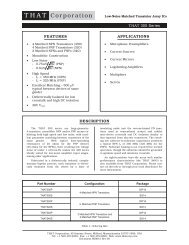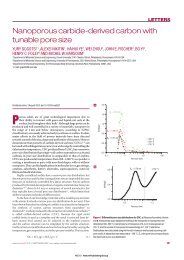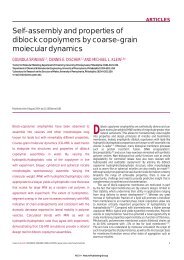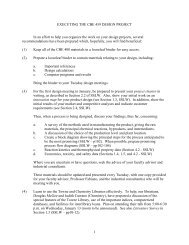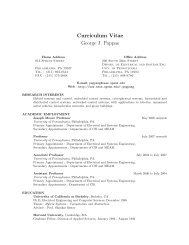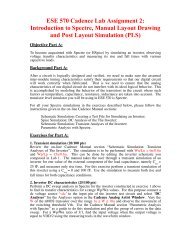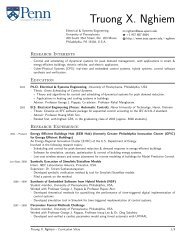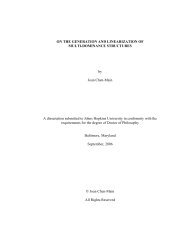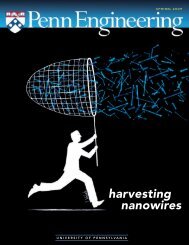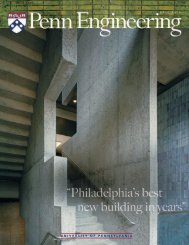Download PDF (9.49MB) - the School of Engineering and Applied ...
Download PDF (9.49MB) - the School of Engineering and Applied ...
Download PDF (9.49MB) - the School of Engineering and Applied ...
Create successful ePaper yourself
Turn your PDF publications into a flip-book with our unique Google optimized e-Paper software.
WWW.SEAS.UPENN.EDU<br />
These diverse research experiences prepared Lee for<br />
joining <strong>the</strong> Penn faculty in 2009. “If I were at ano<strong>the</strong>r<br />
place, it would be difficult to imagine how my research<br />
could impact people in o<strong>the</strong>r fields, but collaboration is<br />
so natural at Penn. I now have several projects with <strong>the</strong><br />
medical school,” he says, pointing out its close physical<br />
proximity with Penn <strong>Engineering</strong>.<br />
One <strong>of</strong> his collaborators is Rebecca Wells, associate<br />
pr<strong>of</strong>essor <strong>of</strong> Medicine, who is interested in <strong>the</strong> role<br />
<strong>of</strong> proteoglycans, collagen <strong>and</strong> tissue stiffness in<br />
liver fibrosis. After hearing Lee give a presentation<br />
at a Center for <strong>Engineering</strong> Cells <strong>and</strong> Regeneration<br />
luncheon a few years ago, she approached him to<br />
discuss a potential collaboration. Since <strong>the</strong>n, Lee<br />
has worked with Wells to develop a new kind <strong>of</strong> cell<br />
culture system that consists <strong>of</strong> a collagen matrix<br />
whose stiffness <strong>and</strong> proteoglycan content can be<br />
tuned, mimicking <strong>the</strong> cellular environment <strong>of</strong> <strong>the</strong> liver.<br />
“These kinds <strong>of</strong> culture systems are going to enable us<br />
to underst<strong>and</strong> cell behavior in a much more realistic<br />
way,” Wells says.<br />
Lee’s innovative work has not gone unrecognized.<br />
In 2011, he received <strong>the</strong> coveted National Science<br />
Foundation CAREER Award to study electrostatic<br />
interactions in non-polar solvents for <strong>the</strong> assembly<br />
<strong>of</strong> nanostructured thin films for alternative energy<br />
applications. “I work on <strong>the</strong> fundamental side, but<br />
I always have in mind how my research could<br />
influence new applications. I think <strong>the</strong> areas where<br />
my research will have <strong>the</strong> greatest impact are energy<br />
storage <strong>and</strong> conversion, biomedicine <strong>and</strong> water<br />
purification,” Lee says. “The value <strong>of</strong> being a scientist<br />
is that you get to do something that you love to do,<br />
<strong>and</strong> you can also have a positive impact.”<br />
SPRING 2013 n 10



